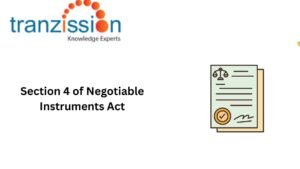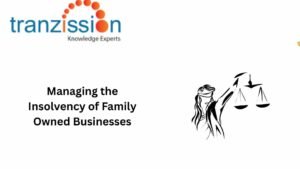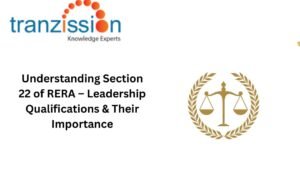
Key aspects of UNCITRAL and its impact on insolvency law
Table of Contents
Key aspects of UNCITRAL (United Nations Commission on International Trade Law) plays a crucial role in international insolvency law through its Model Law on Cross-Border Insolvency, which was approved by the United Nations General Assembly through a resolution in 1997. The Model Law allows for nations to alter, exclude, or include certain provisions in addition to the existing model, giving states the choice to adopt the model in the manner that they deem fit for their national legislation.
Read more : Balancing environmental claims during CIRP
UNCITRAL Legislative Guide on Insolvency Law
The Key aspects of UNCITRAL Legislative Guide on Insolvency Law provides a comprehensive statement of the objectives and principles that should be reflected in a State’s insolvency laws. It helps countries to create and improve insolvency laws or provides a framework for national authorities and legislative bodies to use when developing new laws or reviewing existing ones.
Overview:
The Legislative Guide was developed to assist nations in creating effective and harmonised insolvency frameworks. It offers comprehensive principles for the design and implementation of insolvency laws. This Guide is also relevant to international trade because strong insolvency regimes can help prevent financial crises.
Key Objectives:
The key objectives of the UNCITRAL Legislative Guide include establishing a predictable legal framework for insolvency proceedings, addressing the financial difficulties of debtors as quickly and efficiently as possible, balancing the interests of all stakeholders, while considering public policy concerns, such as employment and taxation. This Guide also supports cross-border cooperation in insolvency matters.
Structure of the Guide:
- Discusses the key objectives of insolvency law, structural issues such as the relationship between insolvency law and other laws, the types of mechanisms available for resolving a debtor’s financial difficulties, and the institutional framework required to support an effective insolvency regime.
- This Part outlines the core features of an effective insolvency law and covers the key stages of an insolvency proceeding, such as initiating insolvency, implementing a stay on creditor actions, etc. By providing a standardised approach, Part II aims to promote consistency in domestic insolvency proceedings and how they are conducted across different countries, facilitating cross-border insolvency cases.
- Part III delves into the unique challenges of managing insolvency within “enterprise groups”, including issues like centralised decision-making and coordinated proceedings across different jurisdictions. It also builds on the Model Law on Cross-Border Insolvency, providing additional considerations for managing cross-border insolvency cases involving multiple entities within an enterprise group.
- This Part focuses on the obligations of directors and management within a company when it is approaching insolvency, aiming to protect interests by incentivising timely action to minimise financial distress and maximise value for stakeholders during insolvency proceedings.
- Part V was finalised in 2021 and designed to take the unique characteristics of micro and small enterprises (MSEs). It advocates for streamlined insolvency proceedings that are less complex and costly, making them more manageable for MSEs. Hence, Part V, plays a crucial role in promoting a more inclusive and accessible insolvency framework for MSEs, helping facilitate their economic recovery in case of financial distress.
Key Principles from the UNCITRAL Legislative Guide
Transparency and Predictability:
The Key aspects of UNCITRAL Legislative Guide ensures that insolvency laws provide clear and consistent procedures. It provides a transparent and predictable insolvency law that should include incentives for gathering and sharing information. This Guide provides that the law should provide a mechanism for equitably treating all creditors and building trust among creditors and investors.
Maximization of Asset Value:
This Guide emphasises the importance of maximising the value of assets during insolvency proceedings and preserving it for distribution to creditors. It ensures that there is an equitable, flexible, and cost-efficient method for resolving financial distress
Equitable Treatment of Stakeholders:
The policy of equitable treatment under this Guide ensures that the insolvency proceedings balance the rights of secured and unsecured creditors while considering debtor interests. The objective of this is based on the notion that in collective proceedings, creditors with similar legal rights should be treated fairly, receiving a distribution on their claims per their relative ranking and interests.
Cross-Border Cooperation:
To promote coordination between jurisdictions and facilitate the provision of assistance in the administration of insolvency proceedings origination in foreign countries, insolvency laws should provide rules on cross-border insolvency, including recognition of foreign proceedings, by adopting the Key aspects of UNCITRAL Model Law on Cross-Border Insolvency.
Adoption and Implementation in India
India’s Approach to Key aspects of UNCITRAL Principles:
India has adopted the Model Law to address cross-border insolvency cases, where an Indian company has operations and creditors in multiple countries. However, India has made the necessary adjustments to align with the Insolvency and Bankruptcy Code, 2016 (IBC), such as asset maximisation and creditor rights, and the needs of its corporate structure.
Read more : Offences and Penalties under IBC, 2016
Cross-Border Insolvency in India:
The Insolvency Law Committee put forth a proposal to integrate the Key aspects of UNCITRAL Model Law in the IBC in 2018, Draft Part Z, aimed at regulating cross-border insolvency proceedings. The draft framework addresses situations where a company undergoing insolvency has assets and creditors in multiple jurisdictions and is aimed to facilitate cooperation between Indian Courts and foreign authorities.
Challenges in Implementation:
The main challenge in implementing the legislative guide in India regarding the determination of the “centre of main interests” of a debtor, or deciding the jurisdiction of the matter when the debtor operates in multiple countries. There are challenges in its effective implementation due to the limited understanding, training among professionals, judicial delays, and inconsistent interpretations in cross-border cases.
Comparative Insights: UNCITRAL and India’s IBC
There are different aspects to compare the adoption of Key aspects of UNCITRAL in India with other countries regarding transparency, cross-border framework, and balancing the interests of stakeholders:
Global Perspectives: Key aspects of UNCITRAL in Practice
- United States: The Key aspects of UNCITRAL Model Law on Cross-Border Insolvency has had significant impact on US cross-border insolvency law by providing a framework fro recognising and coordinating foreign insolvency proceedings. This lead to greater consistency and coordinating foreign insolvency proceedings. It has been implemented in Chapter 15 of the US Bankruptcy Code and facilitates cross-border coordination.
- European Union: It has provided a standardised framework for recognising and cooperating on insolvency proceedings across different jurisdictions, and efficiency in handling multinational bankruptcies, while allowing room on adaptation based on individual member states’ legal systems. By adopting the Model Law, the EU was able to provide guidelines on harmonising insolvency laws across member states as it focuses on the objective of cooperation and coordination.
- Lessons for India: India can adopt a robust cross-border insolvency framework based on Key aspects of UNCITRAL principles. This may enhance global investor confidence, while developling a modern, fair, and harmonised insolvency framework for cross-border proceedings.
Advantages of Aligning Indian Insolvency Law with UNCITRAL Principles
Boosting Investor Confidence:
The Model Law allows courts to cooperate with foreign counterparts and coordinate concurrent proceedings. This can help achieve the best possible outcome for proceedings under the IBC and foreign proceedings. Having a harmonised legal framework can attract foreign investments and improve ease of doing business.
Effective Resolution of Cross-Border Cases:
The Model Law helps countries develop modern legal frameworks to address cross-border insolvency cases. Therefore, it facilitates smoother asset recovery and coordination in multi-jurisdictional insolvencies. It also allows countries to deny recognition of foreign proceedings if they are inconsistent with domestic public policy.
Strengthening Institutional Capacities:
It can help India manage insolvency cases that involve multiple jurisdictions. As its main focus is on cooperation and coordination between jurisdictions can help improve the handling of cross-border insolvency. The Model Law will also help build expertise and capacity among insolvency professionals and judicial bodies.
Key Challenges and Recommendations
The IBC lacks a detailed framework for cross-border insolvency, and sections 234 and 235 of the IBC are inadequate for navigating the complexities of cross-border insolvency. Determining the appropriate jurisdiction to handle an insolvency case when a company operates across multiple countries can be challenging without a standardised framework. Therefore the lack of fully adopting cross-border in India, and various courts applying their own judicial interpretations, further complicating the matter.
Recommendations:
To adopt the suggestions under the Legislative Guide, the IBC needs to be amended, the Insolvency and Bankruptcy Board of India (IBBI) can introduce training programs, and establishing treaties:
Amendments to IBC:
It is crucial to amend the current insovlency laws to enhance cross-border insolvency mechanisms, streamline the corporate insolvency process, and establish a more robust creditor protection measures.
Training Programs:
The IBBI can introduce training programs for insolvency professionals and judicial officers on the foundational understanding of the UNCITRAL Legislative Guide on Insolvency Law, the practical application of the legislative guide and how it aligns with the IBC, and dedicated sessions on the complexity of cross-border matters.
Bilateral Treaties:
The IBC should establish bilateral agreements for cross-border insolvency cooperation, as both countries should agree to recognise and enforce insolvency proceedings initiated in other jurisdiction, and mechanisms for courts in each jurisdiction to communicate and cooperate with each other during such cases.
Case Studies on UNCITRAL Principles in Action
Jet Airways Case, India:
The Jet Airways is a notable example highlighted the need for cross-border cooperation under UNCITRAL principles along with amendments in the IBC. Cross-border insolvency proceedings are important for protecting the interests of all stakeholders and achieving efficient resolution. This was the first instance of cross-border insolvency in India. A Dutch court appointed a bankruptcu trustee to seize Jet Airways assets in the Netherlands. The protocol designated India as the “center of main interest” and recognised Dutch proceedings as “non-main proceedings”. The coordination between Indian and Dutch insolvency professionals demonstrated early steps toward international alignment.
Lehman Brothers, US:
The bankruptcy of the Lehman Brothers was a significant event during the 2007-08 financial crisis. This case demonstrated the need for a coordinated international approach to managing complex cross-border insolvencies, specially when large companies become insolvent. This case is an example of how jurisdictions implementing UNCITRAL principles managed complex cross-border insolvency efficiently.
Conclusion
UNCITRAL Legislative Guide offers a roadmap for building effective and harmonized insolvency frameworks. The impact of UNCITRAL on insolvency law is that is provides a standarised framework for cross border insolvency proceedings by promoting cooperation and coordination between different jurisdictions. While the IBC has integrated many of these principles on coordination and the equitable treatment of all stakeholders, there are further steps that are needed to implement the principles of the Model Law. Indian insolvency law has yet to adopt the procedures on cross-border insolvency.





